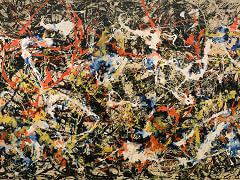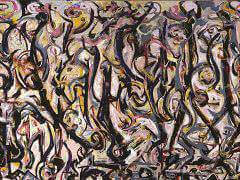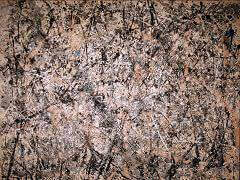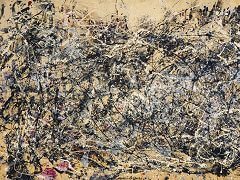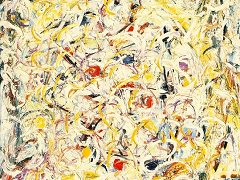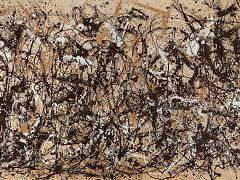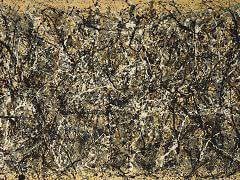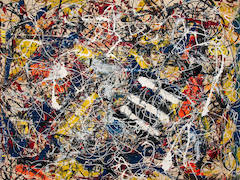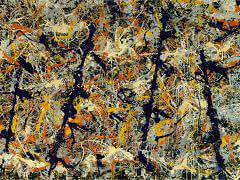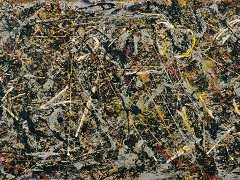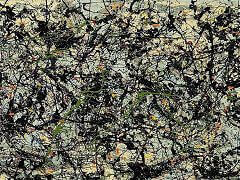Going West, 1934 by Jackson Pollock
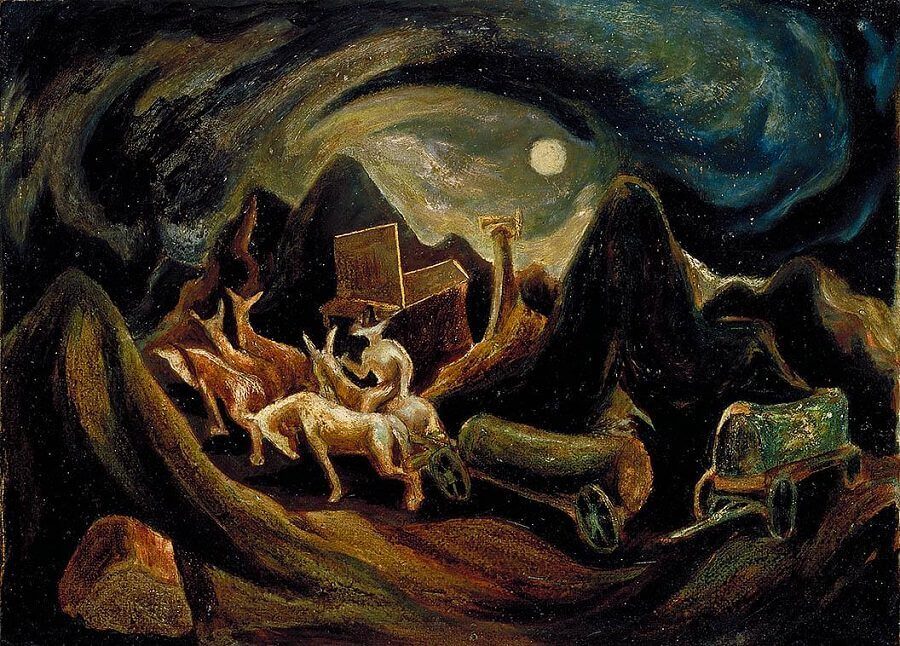
Jockson Pollock is best known for his abstract 'drip-painting' technique developed in the late 1940s, Earlier in his career however, Pollock's work adopted a more narrative style and subject matter derived heavily from late
nineteenth-century painters such as Pinkhom Ryder. Like many American artists during the 1930s, Pollock was largely dependent upon financial assistance of the Federal Arts Project (FAP) of President Roosevelt's 'New Deal'. He
became widely aware Regionalism and of the works of the Mexican muralists, for a while attending the experimental workshop of the painter David Alfaro Siqueiros (1896-1974).
Pollock's Going West also reveals the strong influence of another muralist, Thomas Hart Benton (1889-1975), under whom Pollock had studied at the New York Art Students League. Here, Pollock's adoption of a heroic, frontier
subject executed with broad, gestural brushstrokes pays homage to Benton's Regionlism. However, where Benton by now largely rejected modern European art and, in particular, abstraction, Pollock increasingly incorporated such
factors into his own work as a means to express the changing experiences of life in modern America

